It is fragrant phloxes that are able to fill your garden with chagging aroma and dazzling paints. Stunning universality and unpretentiousness of these decorative plants presented their homeland - North America. The harsh climate hardly hardened them, and the efforts of breeders only strengthened the quality of this flower. Europeans got acquainted with floccals in the middle of the XVIII century. At the moment, more than 1,500 hybrid varieties are derived, which are resistant to a variety of unfavorable environmental conditions. The word "phlox" in Greek means "flame". It is thanks to amazingly bright colors that the flowers were spotted by Karl Linnem, who gave them such a name. In this article, you will learn about the flocks of annuals, landing and leaving these plants.
Flox Oil Flower - Description
Floxians conquered the hearts of many gardeners with their unpretentiousness and spectacular appearance. Among the features of the structure and appearance of this flower, the following can be distinguished:
- floxom annuals are represented by only one species - Phlox Drummond. In 1835, this species found Henry Drummond, in honor of which it was given the name to this group of phlox;
- what do annual phlox look like? They grow in the form of a compact bush with branching shoots;
- flower phlox annual grows up to 30 cm, and dwarf varieties grow up to 12 cm;
- the leaves of phlox annuals have an elongated oval shape;
- the flowers of phlox annuals can be completely different colors - blue, orange, pink, white, etc.;
- the most common varieties of Phlox Drummond are large-flowered and stars of phlox;
- the period of active flowering of annual phloxes is rather long. You can inhale a drinking fragrance from the beginning of summer and to the most frosts;
- phlox Dermond Star has flowers, which in their shape resemble the stars.
Phlox annual. Photo
Varieta Flox annually
Phlox one-year "Promises Pink"
This variety is incredibly beautiful. A bush has a very compact form. The plant is considered to be flusted by a low annual, because Reaches a maximum height of 20 cm. Fragrant flowers are painted in a juicy pink color, which does not fade in the sun. This variety is successfully applied to the decor of balcony boxes, to create flower compositions on the flower beds, the decor of the space along the tracks.
Flox annual "Shimmering Star"
Putting this variety of phloxes in its plot, you will admire the charming colors in the form of stars all summer. Each petal on the flower has a pointed form, due to which the star resembles. The plant grows in the shape of a bush and does not exceed a height of 25 cm. Some lovers of phlox prefer to grow a "shimmering star" on the balcony, loggia.
Flox annual "Constellation"
Flowers of this variety of phlox are assembled into spectacular inflorescences in the form of muffins. Each flower has a rather large size - up to 3 cm in diameter. Such magnificent inflorescences create a volumetric appearance of the Kuste. The colors of Floxes will surprise even the most demanding and sacred gardeners. You can find white phloxes, red phlox, yellow, orange, blue, pink. The plant is great for creating flower arrangements, decorating space around the arbor, terraces.
Phlox annual "Star rain"
Flowers of this variety of phlox also resemble miniature stars. The plant has upright stalks with numerous side shoots. A bush reaches a height of 0.5 meters. The undoubted advantage of growing "Star Rain" is the amazing stability of this variety to the most unfavorable environmental conditions. Floxes are perfectly tolerated drought, frosts. The greatest decorativeness plant reaches at sunny sites.
Methods for reproduction of annual phloxes
Reproduction of annual phlox seeds
Perennial varieties of phloals successfully multiply vegetatively. But for annual copies prefer to grow precisely by the seed method. Follow the following advice when sowing seeds Floxes:
- some gardeners advise sow seeds of phloxes for the winter. Plants planted at this time, in the spring will give very early and strong shoots, which will quickly bloom. Sowing is produced at the end of October or in November. If the snow is already lying, then simply clear the area for landing from it with a shovel. Select a plot that will become a permanent plant of phlox. Seed seed at a distance of 4-5 cm from each other and slightly sprinkle the earth. You can buy a finished nutritious soil. Stick your crops with a snowy cap;
- you can sow annual phloxes and spring. Also, seitseed seeds at a distance of 4-5 cm from each other on the prepared soil. Pour sowing with a thin layer of soil. Floxes in the spring should be covered with polyethylene. Be sure to check your crops, delete condensate in a timely manner on the inside of the shelter, check the crops. But get ready for the fact that the in the spring annual phlox falls will bloom much later than those that were planted under the winter.
Growing seedlings of phlox annual
The early blooms of annual phloxes can be achieved with the help of growing seedlings of this plant at home. When can I start sowing seeds of Floxes at home? It depends on the month in your region, the threat of frosts. You can navigate at the beginning or end of March.
- Follow in advance seeds of phloxes. Take them only in proven stores, defining attention to the shelf life. You can use the seeds that were collected by hand, if you have already grown Flox last year. Choose several varieties at the same time to enjoy the summer real fireworks.
- Prepare containers for seeding seeds. It can be containers, drawers, pots, plates, etc.
- Floxes are unpretentious to the quality and composition of the soil. But you can always purchase a nutritional soil for decorative plants, which never hurts.
- Seeds should not be plugged into the soil. Just spread them on the surface at some distance from each other and slightly pressed.
- Cover the containers with sowing polyethylene or glass. Put flocks into a warm and bright place.
- Regularly ventilate the phlox and remove the water droplets on the inside of the glass or film - condensate.
- Follow the soil moisture that should not be reduced. Gently spray the phlox with warm water from the spray.
- After 2-3 sheets appear in sprouts, they need to be counted in individual containers. Do not stand young phlox under bright sunlight. Take care of creating scattered and soft light. Continue to support moisture plants.
- Are annual phlox plug? As soon as Flox is empty the fifth or sixth sheet, you need to pinch them. It is necessary in order to begin to form a neat bustice of phlox.
- The seedlings of phlox can not be fed. But the introduction of mineral fertilizers, which can be carried out twice, does not prevent the growth of the flower, but will only strengthen its decorative qualities.
- About 1 month before the expected landing in open soil, young phlox needs to start hardening. Take out the plants to the street first for a couple of hours, and then gradually increase the time of staying in the air. Thus, you will mostly prepare plants to the conditions of the street, and they will come down in a new place much better.
Phlox annual. Landing
Step 1. Select a place to land the annual phloxes
In order to see the most beautiful bloom of phlox, it is quite serious to take place to the selection of landing sites. It is from this that the duration and brightness of flowering of annual phloxes will depend on. Explore the following recommendations on the choice of place of landing of annual phloxes:
- annual phloxes are drought-resistant and light-affiliated plants. But from direct exposure to sunlight root system of phloxes will overheat. The brightness of the colors will flexible quickly, and the bloom itself will not be long. An ideal place for landing will be a half worth;
- it is Flox that grown in a half-tree, under an emission crown of trees that skips the sun rays will show you the maximum brightness of the paints;
- choose a place to land Floxes in the distance from plants with a highly developed root system;
- if you put the phlox in a shady spot, then prepare for the fact that the bloom will not be bright, but it will be very long;
- choose a fairly high place for planting annual phloxes, in the shade of fruit trees, for example.
Step 2. Prepare the ground for landing annual phloxes
Floxes annuals are one of the most unpretentious to the composition of the soil of plants. If you do not take absolutely no attempts to improve the soil, the phloxes will simply bloom not so bright. If you want to achieve maximum decorativeness, then follow the following rules for the soil preparation for planting Floxes:
- floxes annuals negatively belong to heavy and clay soils. If on your site is just this, then add a certain amount of sand under the people to make the soil more loose and light;
- too light soil is also not suitable for phloxes. In hot weather, it very quickly overheats, which will harm the root system of plants;
- floxom annuals negatively relate to soils with elevated acidity. Gardeners usually carry out the limestone;
- the optimal soil for the phlox annuals will be soil with an admixture of humus, soil with good drainage;
- if the soil on your site is distinguished by poverty and low level of fertility, then organic fertilizers and peat can be made under the people.
Step 3. Landing seedlings of annual phloxes in open ground
The place for planting phloxom annuals is chosen, the soil is prepared, which means that you can start planting the seedlings of phloxes into open ground. Of course, if the weather conditions already allow it to do. So, plant annual phloxes:
- for planting seedlings of phloxes in open ground it is better to choose the evening;
- the soil must be well repaired and prepared;
- drop the wells of a small size so that the root system of the seedlings fit there;
- the minimum distance between young plants is 20 cm;
- if the varieties are tall, then the distance between the young seedlings when landing should be increased;
- in the well with an exemplary depth of 20 cm put the plant, fall asleep its land, slightly seal. The root neck must be shuffled so that the plant does not receive burns from sunlight;
- do not forget to pour phlox water to room temperature;
- the surface of the soil around the plants after irrigation is better to climb.
Phlox annual. Care
The huge advantage of the oxual annuals in growing is their absolute unpretentiousness. If you simply water the plants from time to time, they will still please you with their aroma and bright colors. Minimal Recommendations for Flox Care are:
- watering. Floxes annual require regular irrigation. Immediately after planting plants, it is necessary to water every 2 days within 14 days. If the weather is hot and arid, then you can watered daily. Floxes critically refer to water temperature during watering. Do not water the plants from the hose with cold water. The root system from this can suffer significantly. Water in the morning or in the evening with a slight warm water. You need to pour under the root. For 1 sq.m. should leave approximately 2 buckets of water;
- swimming. For the whole season you need to loosen the soil around the floccoxom annuals about 7 times. This will ensure a good oxygen inflow to roots;
- deleting weeds. Delete weary grass is a compulsory rule of care for all decorative plants. Flowerba will always look neat and tidy;
- feeding Flox can not be fed. If you want the most bright colors when flowering, large sizes of colors, you can pamper phlox feeding. You can make fertilizers in 4 stages. First feeding with liquid manure you need to spend at the end of May. The second dressing is carried out with liquid manure with the addition of superphosphate at the beginning of summer. The third denuncation is carried out in the second summer month, and the fourth - in early August. The last feeding must be limited to the introduction of potash salt and phosphorus;
- mulching. Mulch the surface of the soil in the roar zone is needed in order to reduce the risk of drying the soil;
- visual inspection of plants. If you want to enjoy healthy appearance of colors. Every summer, to achieve a few blooming waves, then delete faded flowers in a timely manner, damaged sheets.
Floxes annual after flowering
Which plants can be collected seeds
If you have successfully coped with the cultivation of Floxes from the seeds that you purchased in the store, then try to prepare the seed material yourself. Next year you grow Flox from your seeds. It turns out that not all phlox annual suitable for collecting seeds. If you planted the store of Floxes with the "F1" mark, then the seeds will not get out of it. The fact is that such a mark means that the grade is hybrid. This means that the plant will not grow exactly the same, it worst its qualities for the next season. You can risk and plant such seeds. Perhaps the received plant will look quite decorative, have an unusual color and the shape of the petals.
- Let's notice the blooming phlox with colored strings, ribbons, signs, which will mean affiliation to a certain variety.
- Save information about the seeding and flowering of Flox's shopping varieties. This information is very useful for you when landing seeds that you will collect manually.
The rules of workpiece and storage of seeds of phlox annual
- Cut the faded phlox for further drying and collection of seeds is better in the afternoon. The weather should be dry, and on plants there should be no dew.
- Spread the plants on the surface in a dry, warm and dark place for further drying.
- If the stem has become easy to break in his hands, then the plant dried completely.
- Each inflorescence must be sorted in the hands so that the seeds fall on the newspaper.
- Next, you need to separate seeds from garbage. You can use different sieves, and you can separate the garbage by blowing. Take up the tank with seeds and slowly pour them on the newspaper. Light dry leaves, branches will be separated.
- Seeds need to put in paper or fabric bags, cardboard boxes, sign each container. Keep the seed material is needed in a well-ventilated room.
Dangerous diseases and pests of phlox annual
Diseases of phlox annual
Diseases can hit plants due to non-compliance with the regime of watering, the rules of agricultural engineering, improper preparation of seeds to landing. Among the most frequent and dangerous diseases of phloxes, which can lead to the complete death of the plant, can be listed:
- pepperliness. Symptoms: an ugly pattern appeared on the leaves, which makes the appearance of the plant ugly;
- puffy dew. Symptoms: Belegic colors on the stems and bottom of the leaves;
- septoriasis. Symptoms: Dark specks on the leaves that increase over time;
- fomoz. Symptoms: sudden dryness of leaves and excessive fragility of the above-ground parts of the plant;
- verticillious fading. Symptoms: gradual destruction of phlox roots due to high soil acidity.
Pests of phlox annuals
Floxa Annual can become a delicious "dessert" for a variety of pests:
- nematode;
- naked slugs;
- butterfly caterpillars.
One of the most effective means of prophylaxis from the infection of phlox annual pests is regular weeding. Weed grass is an excellent pest insect pedestal.
Tricks of growing annual phloxes
- If the air temperature has become abnormally high, then climb the root surface of the phlox. So you will save the root system from sunburn and soil cutting.
- Moldy bread will become an excellent natural fertilizer for annual phloxes. Slices of bread with mold Soam in water for a couple of hours, and then jerk around the plant.
- Very neat loosen the soil around the phlox! The roots of the plant are located so close to the surface of the soil, which can be very easy to damage.
Fragrant annual phloxes on the flowerbed can become a "business card" of your site. Try to grow these unpretentious plants that will charm you forever their variety of shades, an unforgettable aroma.

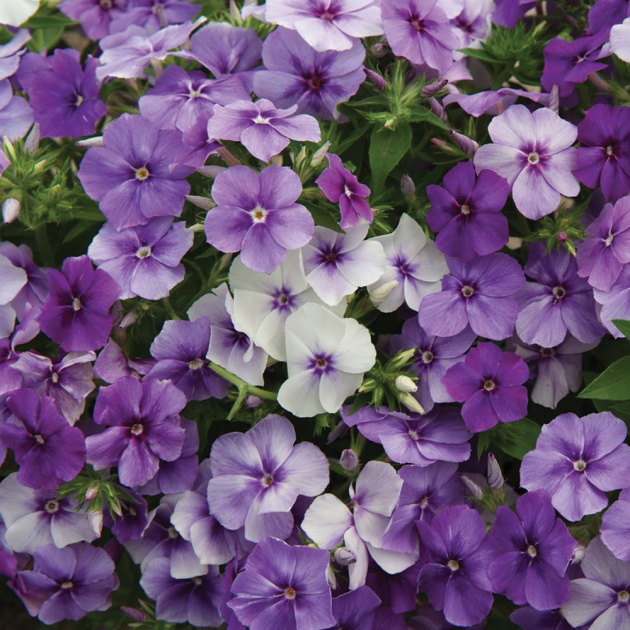
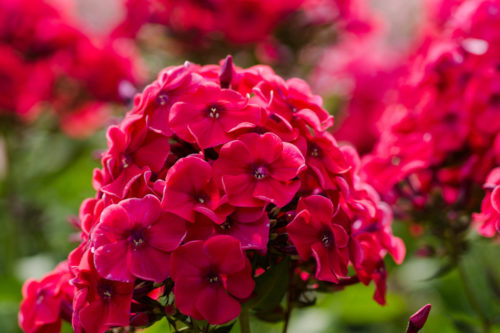
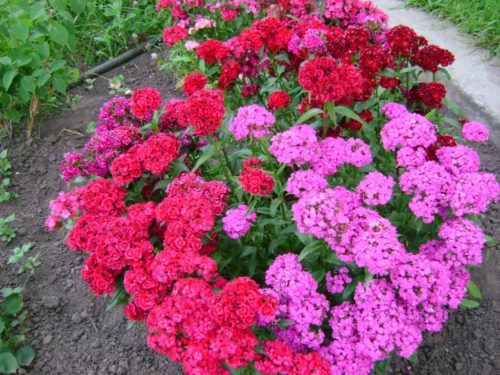
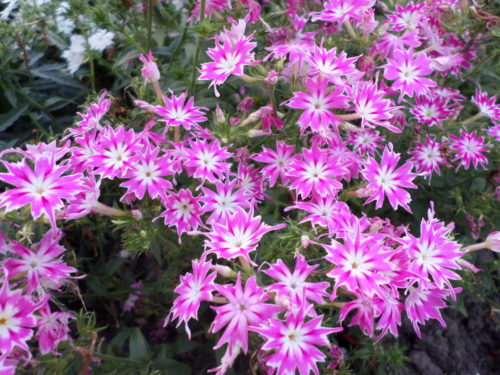
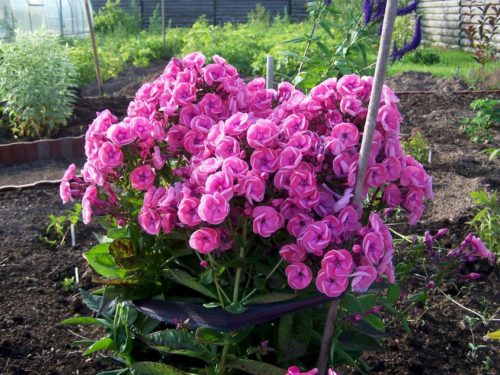
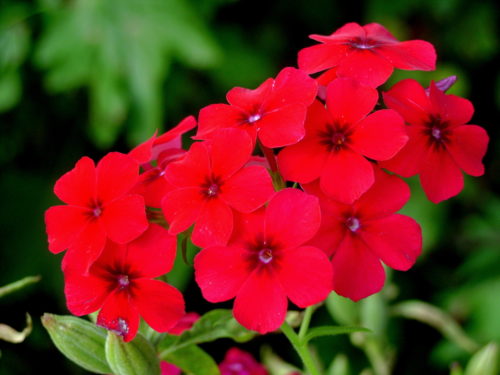

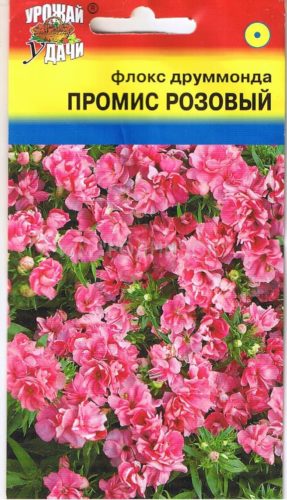



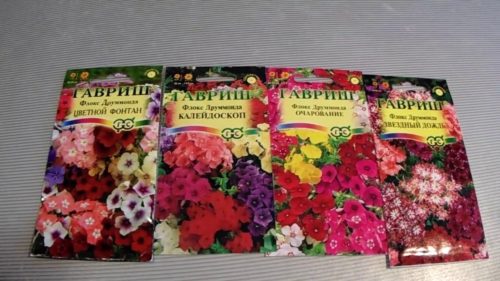
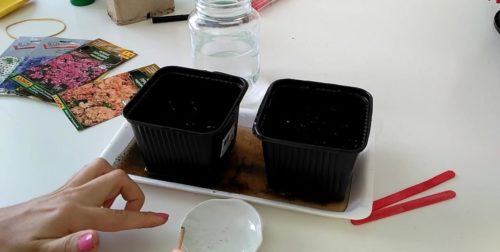
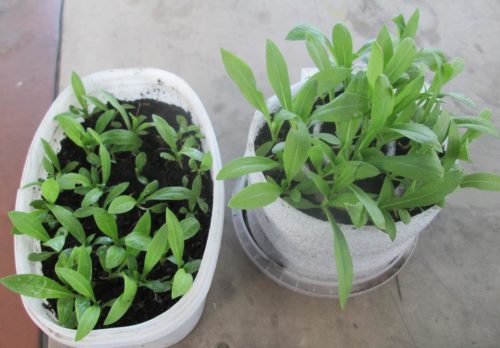
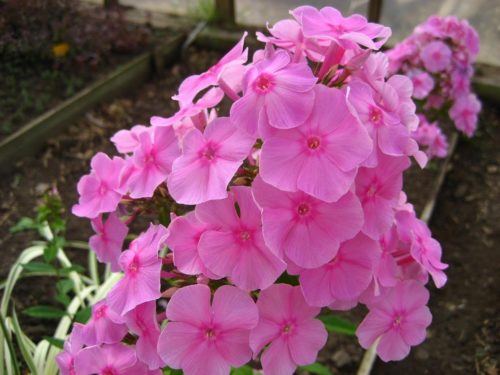
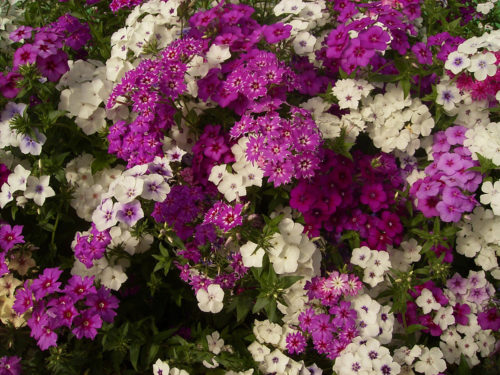
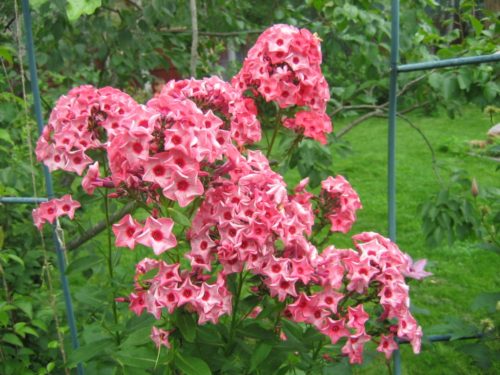
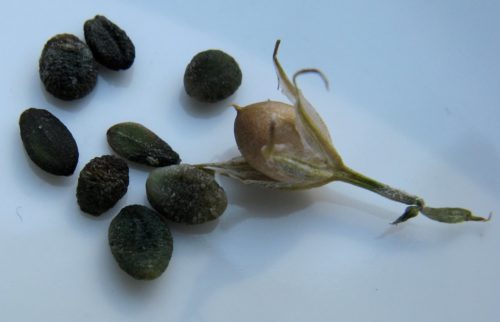












 Start a discussion ...
Start a discussion ...